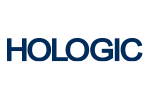Biden’s Action a Significant Victory for Laboratory Workforce
If you are one of 45 million individuals who have outstanding federal student loans, August 24 was a good day. That's the day President Joe Biden announced plans to provide up to $10,000 in federal student loan forgiveness for most loan holders, marking a key advocacy win for laboratory professionals.
One of the challenges facing laboratory professionals and other healthcare workers is the cost of education and that their student loan debt is roughly $10,000 higher than for other fields.
The high cost of education is one of the reasons why ASCP has been calling on federal policymakers to provide laboratory professionals with access to the same federal loan forgiveness and scholarship opportunities that the government provides other healthcare professions.
Biden’s announcement would provide $10,000 in loan forgiveness for individuals who earn less than $125,000 annually in income ($250,000 for married couples); for those who received Pell grants (provided to students with exceptional financial need), this benefit doubles to $20K. President Biden also indicated that he will be providing a final extension of the pause on payments and interest accrual for federally held student loans through Dec. 31, 2022.
Biden also outlined other initiatives his administration is doing to address student loan debt, such as addressing eligibility issues with the
Public Service Loan Forgiveness (PSLF) Program and cutting in half how much borrowers need to pay back each month under the
Income-Driven Repayment Program. Details
here.
Another financial challenge affecting student loan debt is that interest rates are significantly outpacing wage growth. The annual interest rates on Direct PLUS Loans (for Parents and Graduate or Professional student) have averaged 6.8 percent over the last 10 years, while rates for Direct unsubsidized loans have averaged 5.8 percent. Loan rates are lower for undergraduate loans, averaging 4.1 percent over the same period. During this time, wage growth has only been about 3 percent annually.
For many students, particularly those with lower wages, this wage growth gap causes their debt load to increase, even as they work to pay off their loans. Indeed, student loan debt has skyrocketed to $1.6 trillion (from just under $1 trillion in 2012). Student loans, which are typically structured to be paid off over a 10-year period, now take about 21 years, on average, to pay off.
ASCP will continue advocating for the federal government to help laboratory professionals access federal benefits to help health professionals defray educational costs. We will also be closely following efforts to fix the eligibility problems that have plagued the PSLF Program.
To read more articles from this issue of ePolicy, click
here. To learn more about ePolicy News and access past newsletters and articles, click
here.
For more information regarding ASCP's advocacy initiatives and policy positions, please contact ASCP's Center for Public Policy at (202) 408-1110.

ASCP ePolicy News is supported by an unrestricted grant from Hologic.
